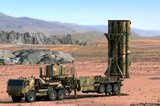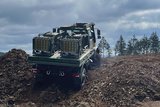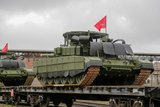NATO boosts defences at Kandahar airfield
Advanced Counter Improvised Explosive Devices (C-IED) sensors have been delivered and installed at Kandahar airfield. This successful and on schedule delivery was done by the NATO C3 Agency.
On December 14, new C-IED sensors were successfully delivered and installed at Kandahar Airfield Entry Control Points and Passenger Terminal. NC3A acted as a host nation for procuring the system under a contract of $4,893,197. Rapiscan Systems, Inc (USA), a leading supplier of security inspection systems, provided equipment, installation, training and logistic support. This comes on schedule after an International Competitive Bidding held in June 2009 and a contract signature on 28th July 2009.
The highly mobile sensors are able to check incoming pedestrians, cars and trucks in order to detect and display the location of hidden explosives, weaponry and radioactive materials. The method used is material discrimination and shape recognition analysis.
The technology allows Kandahar airfield security personal to scan from safe distance and therefore avoid putting themselves in harm’s way by having to approach and physically inspect potentially suspect material and vehicles.
While the security staff sits some 100 meters away the person or the vehicle is inspected with state-of-the art C-IED technology. The various sensor information is displayed at the stand-off location where an analysis of the collected data is performed. The final result provides a rapid “GO-NO GO” statement.
Protecting key logistics hub
In total, the delivery included the provision of six metal detectors, two Integrated Personnel and Hand Luggage Screening System and one mobile vehicle screening sensor truck-mounted.
“This delivery on schedule would not have been possible without good team work between all the stakeholders and their strong commitment to NATO success” said Franco Fiore, Project Manager at the NATO C3 Agency.
IEDs are the biggest killer of NATO troops in Afghanistan. Most used asymmetric threats are vehicle borne IEDs or suicide bombers. Technology is used to defeat the system, intelligence to break the chain that goes from financing the IED components down to the placement of the IED itself, and training to enhance awareness.
Kandahar airfield is a key logistics hub for NATO forces in Afghanistan. It has been the target of several IED attacks. This delivery is part of a series of technologies being deployed by the NC3A to counter the threat posed by improvised explosive devices under the NATO Security Investment Programme. NC3A is already working on the provision of additional sensors for Kandahar Airfield and ISAF HQ main and back gate.
More from Land Warfare
-
![Hanwha awarded $482 million in major step for South Korea’s missile defence programme]()
Hanwha awarded $482 million in major step for South Korea’s missile defence programme
The deal to produce and supply launchers and missiles to South Korea follows a contract placed with Hanwha Systems last month for the manufacture of multi-function radars.
-
China goes for ground-launched attack weapons as it strengthens deterrence strategy
China has been advancing its capabilities with a new generation of precision-guided artillery and loitering munitions, positioning ALIT’s WS-series as direct competitors with Western systems like the US’s M982 Excalibur.
-
![Strengthening Baltic defence capabilities]()
Strengthening Baltic defence capabilities
How Latvia is bolstering its territorial defences, industrial capacity and international cooperation with Dynamit Nobel Defence’s SKORPION2 Remote Mining System.
-
![Land forces review: British Army vehicle programme stalls and company results land]()
Land forces review: British Army vehicle programme stalls and company results land
In the first monthly review of land forces stories, the Shephard team looks back to evaluate the major news events that have impacted the sector. The UK’s Land Mobility Programme was notable but another setback occurred when a market industry day was scrapped.
-
![Sweden boosts air defence capabilities with Diehl Defence, Saab and MBDA orders]()
Sweden boosts air defence capabilities with Diehl Defence, Saab and MBDA orders
The orders continue the country’s growing investment in its air defence systems across land and sea, coming months after previous investments by the government into IRIS-T SLM equipment.
-
![Russian T-90MS MBT goes for maximum survivability]()
Russian T-90MS MBT goes for maximum survivability
The in-production T-90MS comes with five levels of protection to tackle a wide range of evolving threats on the battlefield.
























